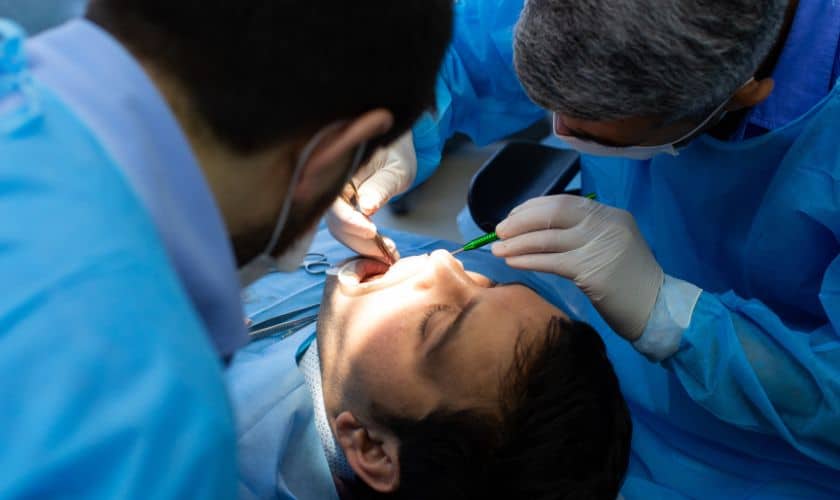Oral surgery encompasses a wide range of procedures that address various dental issues, from tooth extraction to jaw realignment. While the thought of oral surgery may be intimidating, understanding the common procedures and their benefits can help alleviate anxiety and promote informed decision-making. In this informative blog, we will explore seven common oral surgery procedures, providing insights into their purposes and advantages.
1. Tooth Extraction
A. Wisdom Tooth Removal: Wisdom teeth, also known as third molars, often require extraction due to overcrowding, impaction, or improper alignment. Removal of wisdom teeth helps prevent potential oral health complications, such as infection, decay, and misalignment.
B. Simple Tooth Extraction: Simple tooth extraction is performed when a tooth is damaged, decayed, or infected beyond repair. This procedure helps alleviate pain, prevent the spread of infection, and create space for orthodontic treatment or prosthetic replacement.
2. Dental Implants
A. Implant Placement: Dental implants are artificial tooth roots surgically placed into the jawbone to support replacement teeth. Implant placement restores functionality improves aesthetics, and prevents bone loss, offering a long-term solution for missing teeth.
B. Bone Grafting: Bone grafting is often necessary to augment the jawbone’s volume and density before dental implant placement. This procedure promotes successful implant integration by providing a sturdy foundation for the implants.
3. Corrective Jaw Surgery
Orthognathic surgery corrects misaligned jaws, addressing functional issues like difficulty chewing, speech problems, and TMJ disorders. The procedure improves facial symmetry, bite alignment, and overall oral health, enhancing both function and aesthetics.
4. Temporomandibular Joint (TMJ) Disorders
Arthrocentesis is a minimally invasive procedure that involves the injection of fluid into the TMJ to alleviate pain and restore joint function. It is used to treat various TMJ disorders, including jaw pain, headaches, clicking or popping sounds, and limited jaw movement.
5. Biopsies
Oral Tissue Biopsy: An oral tissue biopsy involves the removal and examination of abnormal tissue for diagnosing oral diseases, such as oral cancer. Early detection through biopsy increases the chances of successful treatment and improves overall prognosis.
6. Dental Implant Removal
A. Implant Removal: In rare cases, dental implant removal may be necessary due to implant failure, infection, or other complications. Implant removal allows for the treatment of underlying issues and the possibility of replacing the failed implant with a new one.
7. Pre-Prosthetic Surgery
Ridge augmentation is a procedure performed to correct deformities in the jawbone and create a suitable foundation for dental prosthetics. This surgery enhances the aesthetics and stability of dental restorations, such as dentures or dental bridges.
Summary
Understanding common oral surgery procedures empowers individuals to make informed decisions about their dental health. From tooth extraction to dental implants and corrective jaw surgery, these procedures offer various benefits, including pain relief, improved oral function, enhanced aesthetics, and prevention of further complications. If you require any oral surgery, consult with a qualified oral surgeon who can guide you through the process and help you achieve optimal oral health and well-being.

